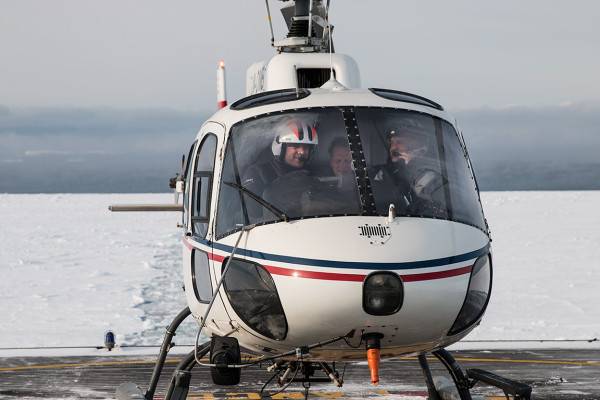This article originally appeared in The Circle, WWF’s quarterly Arctic journal, issue 01.16. See all articles here. See all issues of The Circle here.
Over the past decade the European Union has become one of the largest funders of Arctic research through numerous collaborative projects, coordination activities and support to infrastructures. NICOLE BIEBOW says this has established a rewarding interplay between the scientific community and European policy makers. Biebow is a marine geologist and executive manager of the EU Coordination and Support Action EU-PolarNet.
AS THE ARCTIC CHANGES the European Union and its executive body, the European Commission (EC), are placing increasing importance on science and innovation in the high latitudes – for a variety of reasons.
Changing weather patterns and climate, for example, are altering the sensitive ecosystem in the Arctic. Climate change triggers feedback processes which will have an impact on the global climate system. Europe will consequently be directly influenced by those changes – colder winters being only one of the anticipated effects. Understanding these feedback loops and their implications for European society, improving predictive climate models and reducing existing uncertainties have hence become vital.
But changes in the Arctic also present economic opportunities for local communities, Arctic nations and Europe at large. Thus the European Union has an interest in a continuous, but sustainable development of the Arctic. Scienceinformed decision making is key to safeguarding the fragile ecosystems of the North, to limit risks and to enable adaptation of local communities. These ecologic, societal and economic challenges and opportunities arising from Arctic change have resulted in five key considerations of the EC regarding Arctic research:
Firstly, the EC promotes open science, meaning open access to research infrastructure, to data and to scientific results. A meaningful contribution to a growing and shared body of knowledge is dependent upon scientists having access to all available sources of data in order to facilitate an integrated review system for Arctic science.
The EC also strives to increase the predictive capabilities of climatic changes, feedback processes and weather events through improving the quality, the frequency and the geographic coverage of sustained observations. This implies an integration of space, remote, ground-based and underwater tools.
Technical innovation is highlighted here as a mean of reducing high costs, which previously have been seen as a limiting factor in sustainable development. The EC seeks to establish an open international cooperation. Funding programmes of the EC are already open to applicants worldwide – a standard that the EC hopes to see being replicated.
The EC says it is important to involve Indigenous people, local communities, and the relevant stakeholders in a sustainable development agenda. “We wish to make the Arctic a test bed for sustainable innovation, developing protocols and standards, which can guarantee protection and sustainable exploitation”, says Andrea Tilche, Head of the Climate Action and Earth Observation Unit, Directorate General for Research and Innovation of the European Commission.
And finally, the EC states that none of these objectives can be reached without engaging local communities and relevant stakeholders. For this reason one of the first steps in its Horizon 2020 framework programme for research and innovation was to establish a new coordination action, EU-PolarNet. This consortium – the world’s largest in expertise and infrastructure for polar research – has been called upon to assist the EC in giving advice in polar related questions, coordinating polar research and infrastructures in Europe and in identifying the highest priority research topics.
The EC has now proposed an investment of about 40 Million Euros in Arctic research and innovation for 2016/2017, which focuses on the following key strategic areas: The development of an integrated observation system for the Arctic; the assessment of the impact of Arctic changes on the weather and climate of the Northern latitudes; and the impact of climate change on the Arctic, in particular on permafrost and its possible feedback and the socio-economic consequences. To tackle these questions, the EC seeks multidisciplinary and international projects with strong stakeholder involvement.
Such an investment is of high importance to European polar research owing to the remarkable range of skills, knowledge and infrastructure that can be mobilised and coordinated in large EU projects. This will allow bigger and more complex science problems to be addressed, which are beyond the capacity of one single nation.
